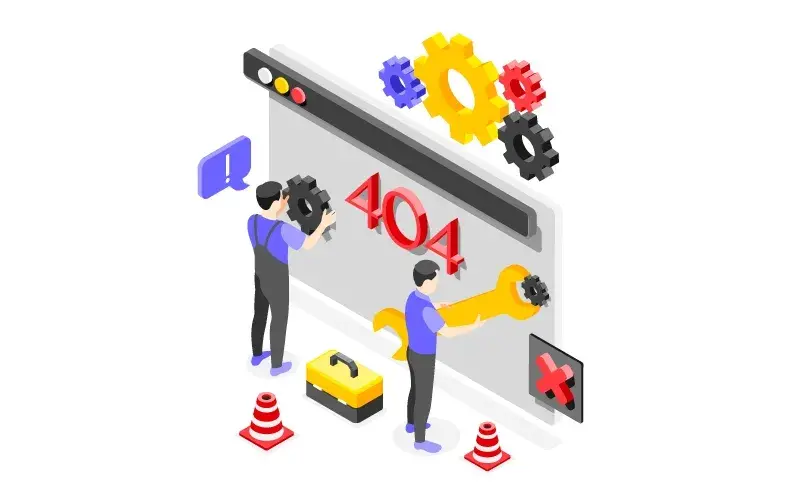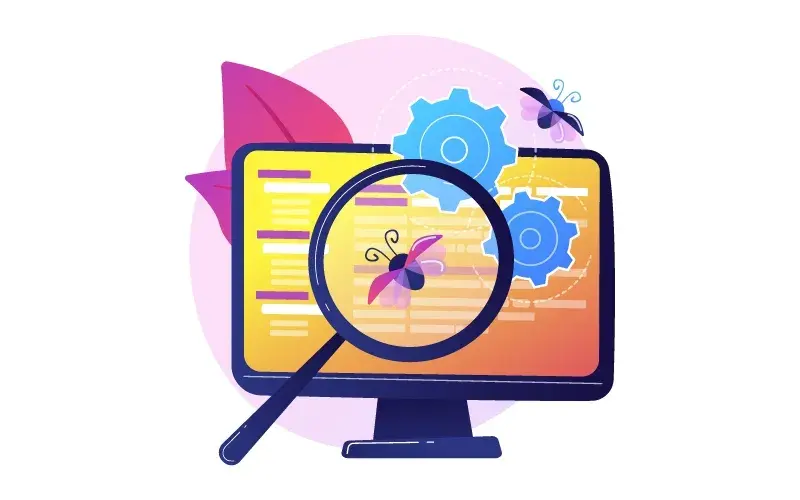Software-related issues can be frustrating and time-consuming for users in Australia. Still, fortunately, many of these problems can be easily resolved with the right approach. In this article, we’ll explore the most common software-related issues faced by Australian users and provide tips on how to solve them.
1. Slow Computer Performance:
One of the most common software-related issues Australian users face is slow computer performance. Various factors, including outdated software, malware, and a lack of maintenance, can cause this problem.
To fix this issue, you can try the following things:
- Check your computer’s resource usage: If it is running slowly, it could be because it is running out of memory or processing power. You can use the Task Manager on Windows or the Activity Monitor on macOS to check your resource usage.
- Close unnecessary programs: If you have a lot of programs running in the background, it can slow down your computer’s performance. Close any programs you are not currently using to free up resources.
- Check for malware: Malware can consume system resources and slow down your computer. Run a scan with your antivirus software to check for and remove any malware affecting your system.
- Delete temporary files and folders: Temporary files and folders can accumulate on your computer and take up space, leading to slower performance. Use a disk cleanup utility to delete these files and free up space on your hard drive.
- Upgrade your hardware: If your computer is over a few years old, it may be time to upgrade its hardware. Adding more memory or a faster hard drive can improve your computer’s performance. If none helps, a deeper issue with your computer may require professional assistance. In this case, it is recommended to contact a computer repair specialist.
2. Incorrect Software Installation Sometimes:
software must be installed correctly to work properly. If installed incorrectly, it can lead to errors or malfunctions. Some common issues that may arise include:
- Incomplete installation: If the software installation is not completed properly, it may not function correctly. This can result in lost productivity and customer dissatisfaction.
- Compatibility issues: If the software is not compatible with the operating system or other programs on the computer, it may not install correctly or cause problems when used.
- Conflicting software: If another version of the same software is already installed on the computer, it may cause conflicts that prevent the new version from being installed correctly.
To troubleshoot an incorrect software installation, you can try the following steps:
- Check the system requirements: Ensure the software is compatible with your operating system and any other programs you use.
- Uninstall any conflicting software: If another software version is installed on the computer, try uninstalling it before attempting to install the new version.
- Install the software manually: If the installation is not completed automatically, try installing it manually using the installation files.
- Contact the software vendor: If you cannot resolve the issue, contact the software vendor for assistance. They can provide troubleshooting steps or a fix for the problem.
If none helps, it may be necessary to consult a computer repair specialist to diagnose and fix the issue.
 https://www.freepik.com/free-vector/_23581929.htm
https://www.freepik.com/free-vector/_23581929.htm
3. Compatibility Issues:
Software is not always compatible with specific operating systems or hardware, which can cause problems for users such as:
-
The software may not install correctly or may not function properly.
-
The software may cause conflicts with other programs on the computer.
-
The software may not be compatible with specific hardware, such as printers or scanners.
To troubleshoot compatibility issues, you can try the following steps:
- Check the system requirements: Ensure the software is compatible with your operating system and any other programs you use.
- Update your operating system: If the software is incompatible with your current operating system, try updating to the latest version to see if that resolves the issue.
- Update other programs: If the compatibility issue is with another program, try updating that program to the latest version to see if it resolves the problem.
- Contact the software vendor: If you cannot resolve the issue, contact the software vendor for assistance. They can provide troubleshooting steps or a fix for the problem.
If none helps, it may be necessary to consult a computer repair specialist to diagnose and fix the issue.
4. Malware and Viruses:
One major problem facing the software industry in Australia is the proliferation of malware and viruses. These malicious software programs can infect computers and devices, causing them to perform poorly or even crash. They can also steal sensitive information or disrupt networks, leading to significant financial and reputational damage.
To overcome this problem, companies and individuals must prioritise cybersecurity and invest in effective antivirus and malware protection. This can include regularly updating software, installing firewalls and encryption technologies, and training employees on best practices for online safety.
Additionally, it is essential for software developers to prioritise security in their design and development processes. This can involve conducting thorough testing and audits, implementing secure coding practices, and adhering to industry standards and guidelines.
Finally, governments and industry organisations need to collaborate and take a proactive approach to address malware and virus threats. This can include implementing regulations and policies to improve cybersecurity, promoting awareness and education campaigns, and working with law enforcement to identify and prosecute cybercriminals. By taking these steps, the software industry in Australia can better protect itself and its customers from the dangers of malware and viruses.
5. Software Crashes:
These occurrences can occur for various reasons, such as coding errors, compatibility issues, or hardware problems. They can lead to significant inconvenience and frustration for users and financial losses for the companies that develop and sell the software.
It is essential for software developers to prioritise quality assurance and testing in their development processes. This can involve conducting thorough testing and debugging, implementing robust error-handling mechanisms, and keeping up to date with industry best practices and standards.
Additionally, software companies need to establish robust customer support systems to help users troubleshoot and resolve issues when they arise. This can include providing detailed documentation, offering online support resources and forums, and responding promptly to customer inquiries and complaints.
Finally, the software industry in Australia needs to work closely with hardware manufacturers and other stakeholders to identify and address potential compatibility issues. By taking these steps, the software industry can help minimise the frequency and impact of software crashes, improving the overall user experience and customer satisfaction.
 https://www.freepik.com/free-vector/_28695263.htm
https://www.freepik.com/free-vector/_28695263.htm
6. License Issues:
Issues of license compliance and violations can occur when companies or individuals use software without purchasing the necessary licenses or when they exceed the terms of their licensing agreements. This can lead to financial losses for software companies and legal consequences for users.
Therefore, software companies should communicate their licensing terms and enforce them consistently and clearly. This can involve implementing robust systems for tracking and managing licenses and educating users about the importance of compliance.
Additionally, it is essential for the software industry in Australia to work closely with government and industry organisations to promote awareness and education about the importance of license compliance. This can include providing resources and guidance to help users understand and adhere to licensing terms and collaborating with law enforcement to identify and prosecute violators.
Finally, software companies must offer flexible and affordable licensing options that meet the needs of different users and budgets. By taking these steps, the software industry can help ensure that software licenses are respected and used appropriately, helping to protect the industry and its customers.
7. Data Loss:
This problem can occur for various reasons, such as hardware failures, malware attacks, or human error. It can lead to significant financial and reputational damage for firms and inconvenience and frustration for their customers.
Therefore, it is essential for software firms to prioritise data backup and recovery strategies. This can involve implementing robust backup systems, such as cloud-based solutions, to ensure that data is regularly and securely backed up. It can also involve training employees on best practices for data management and implementing policies to prevent data loss, such as prohibiting the use of removable media or unauthorised software.
Additionally, it is essential for software firms to invest in cybersecurity measures to protect against data loss due to malware or other external threats. This can include installing antivirus software, implementing firewalls and encryption technologies, and training employees on online safety best practices.
Finally, it is essential for software firms to establish robust customer support systems to help users recover from data loss incidents. This can include providing detailed documentation, offering online support resources and forums, and responding promptly to customer inquiries and requests for assistance. By taking these steps, software firms in Australia can help minimise the risk and impact of data loss, improving the overall user experience and customer satisfaction.
8. Security Vulnerabilities:
One major problem facing software firms in Australia is the issue of security vulnerabilities. Cybercriminals can exploit software design or implementation weaknesses to gain unauthorised access to systems, steal sensitive information, or disrupt networks. This can lead to significant financial and reputational damage for firms and inconvenience and frustration for their customers.
Software companies must prioritise security during the design and development phases to solve this issue. This may entail conducting exhaustive testing and audits, using secure coding techniques, and abiding by industry standards and regulations.
Additionally, it is essential for software firms to regularly update their products to address discovered vulnerabilities and to keep up to date with emerging threats. This can involve implementing patch management systems and providing users with timely notifications and instructions for installing updates.
Finally, it is essential for software firms to work closely with government and industry organisations to stay informed about emerging security threats and best practices for addressing them. By taking these steps, software firms in Australia can help protect their customers and the industry from the dangers of security vulnerabilities.
9. Poor User Experience:
This can occur when software is challenging to use, lacks essential features or functionality, or performs poorly. It can lead to customer dissatisfaction, reduced sales and revenue, and damage a firm’s reputation.
To address this issue, software companies must prioritise user experience throughout their design and development processes. For that, it might be essential to conduct user research and testing to understand client preferences and needs, apply user-centred design principles, and continuously gather and act on user feedback.
Additionally, it is essential for software firms to regularly update and improve their products to address identified user experience issues and to keep up with changing customer needs and expectations. This can involve implementing agile development methodologies, conducting regular user testing and research, and staying up to date with industry best practices and trends.
Finally, it is essential for software firms to establish robust customer support systems to help users troubleshoot and resolve issues when they arise. This can include providing detailed documentation, offering online support resources and forums, and responding promptly to customer inquiries and complaints. By taking these steps, software firms in Australia can help improve the overall user experience and customer satisfaction.
Conclusion Software-related issues can be frustrating and time-consuming. Still, many of these problems can be quickly resolved by following the tips outlined in this article. By addressing these common software-related issues, Australian users can improve their computer performance and avoid frustrating problems.
